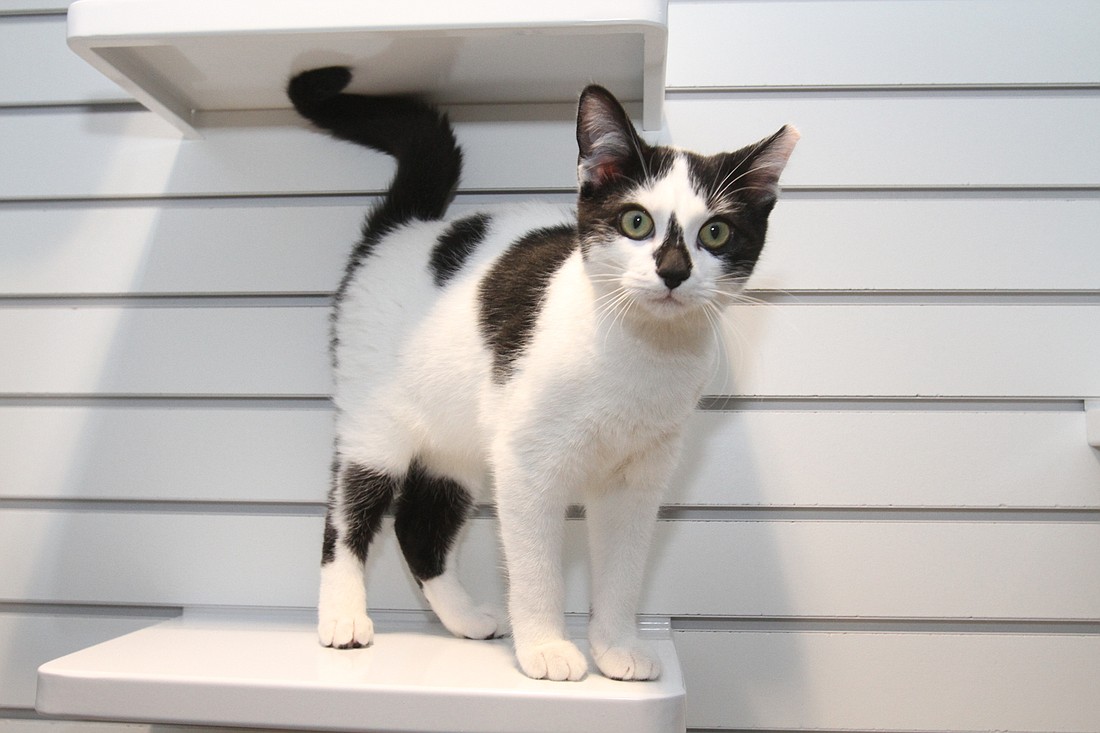- January 12, 2025
-
-
Loading

Loading

Rebecca Gustafson has worked at the Humane Society of Sarasota of Sarasota for 10 years, and it’s safe to say she knew the adoption center building like the back of her hand.
But for all its charm, Gustafson admits it was starting to fall apart.
“Our facility was really old, really rundown, and we've kind of outgrown it,” Gustafson said. “We weren't able to supply or provide the level of care that we wanted to … (it limited) how many pets at one time we could take in, and it limited how many cats we can have on our adoption floor.”
That building came down in late April as part of an $8.5 million renovation and expansion project, with the promise of a new, more spacious building in its place. Staff moved their entire adoption operation to the adjacent education center building – something Gustafson called a hodgepodge of an operating space — while waiting for their new building to be ready.
Humane Society staff moved into the newly opened adoption center in early January and, while there are still renovations and developments to be done, have opened it to the public.
The new space promises a large space for adoptions, greater capacity for cat housing, kitten play rooms, training classes and more. All in all, the shelter will be able to care for around 2,700 animals each year as compared to the 1,800 with the old building. Gustafson and staff visited other shelters in Florida that had had renovations to see the best design choices to be more efficient.
While furniture and other equipment is still arriving, people are able to enter the building and look to adopt a new pet. When the education center is demolished and rebuilt by May, the entire facility will be 37,513 square feet opposed to the old facility’s 18,000 square feet.
Gustafson and other staff are relieved after operating out of the education center for much of 2020. While the dog kennels were relatively new and weren't affected by the renovation project, destroying the main building affected how many cats the nonprofit could house and put up for adoption.
The education center wasn’t meant to hold animals in the way they needed, and the number of cats that could be held at one time dropped from 40 to 20.
“There was silver lining to that, though, our cat adoptions proportionately increased,” Executive Director Anna Gonce said. “Our volunteers really got to know the cats that were available for adoption on an individual level because there were fewer of them.”
What’s more is the new adoption space with its added medical equipment allows staff to take on more challenging animals into their space. In the past, the nonprofit has often stayed with what Gustafson calls fast-track cases — young pets with few to no medical issues that could be adopted quickly. Gustafson says they take in animals from several high-kill facilities, also taking in animals from Texas and Louisiana during Hurricane season.
But with the new facility, staff now have a much larger surgical center where they can take care of animals needing treatment and are able to house more sick cases. Gonce says the plan is to have a veterinarian working full-time at the shelter later this year.
Beyond that, the shelter has promoted three long-time staff members to behavior positions, where they will work full-time with dogs and cats that have behavior issues to make them more likely to be adopted.
The renovations are reaching their final stage with the education center being demolished soon and then rebuilt by May.
“There’s definitely more to oversee, there's so much more square footage,” Gustafson said. “It's actually gotten a lot easier (for staff) because they have the tools that they need. They're not struggling day to day, to complete their tasks, we've purchased and installed the tools that they need to perform their job efficiently.”